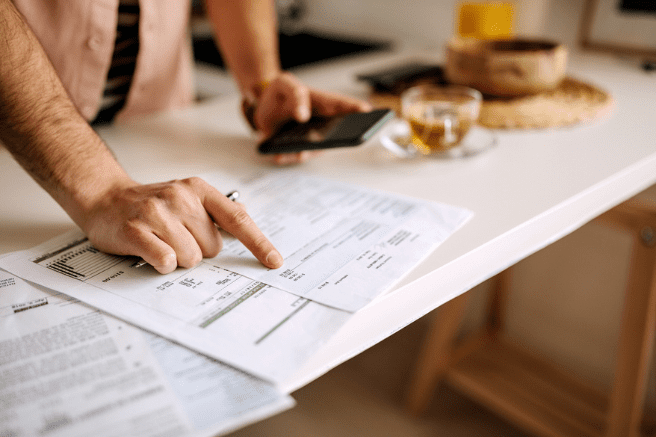Navigating outstanding debts can be a daunting task, especially debts with the Australian Taxation Office (ATO). The Federal Government continues to invest significant additional resources in the ATO to drive compliance and recover debts which is a clear focus area for them.
Since the beginning of the 2024 calendar year, the ATO has changed its’ COVID-era’ stance on debt recovery to a more active and direct approach with businesses of all sizes. This approach covers recovery actions, remission of interest and penalties (or lack thereof), and Director Penalty Notices.
If you have outstanding amounts due, it is essential to understand how the ATO deals with overdue debts, including its approach to debt and the payment plans available to manage your obligations effectively.
As of December 2023, the ATO’s collectable debt amounted to approximately $52.4B, up almost $7B from June 2022. Small businesses accounted for approximately two-thirds of this debt, with 96% of it being for values below $100,000. The ATO currently has around 400,000 active payment plans, with approximately 300,000 belonging to small businesses.
The ATO’s approach to debt
- Prevention: The ATO employs SMS reminders and engagement programs to prevent debt accumulation.
- Early intervention: Self-service payment plans are offered as an initial intervention measure.
- Firmer action: Awareness letters are sent to encourage prompt payment and resolution.
- Stronger action: In cases of non-engagement, the ATO may resort to stronger measures, such as director penalty notices (DPNs), garnishee notices, winding-up applications and disclosing tax debts to credit bureaus.
Repayment options
If you do find yourself in a position where you have a debt owed to the ATO and you are unable to settle it all at once, the ATO has several types of repayment options available.
Self-service payment plan: For tax debts under $100,000, the ATO provides a self-service payment plan option. This online service has a standard 28-day processing time. To be eligible, individuals, sole traders, or businesses must not already have an active payment plan for the same debt. The proposed plan should cover a period of two years or less, with the first payment scheduled within seven calendar days of the request, or 14 days if using direct debit. The ATO considers compliance history and other financial information to assess the likelihood of compliance.
Proposing a payment plan: When proposing a payment plan, you should consider using the ATO Payment Plan Estimator. This tool helps estimate payment plan arrangements and is also used by ATO staff. Assessing the capacity to pay is crucial, and you can use the Business Viability Assessment Tool for this purpose. Tailoring the proposal based on compliance history, risk mitigation and the size and age of the debt is also recommended.
It is also important to note that if you enter into a payment plan with the ATO, you must lodge and pay all future obligations, such as tax and BAS etc, on time. Failing to do so will cause the payment plan to automatically default, reverting the debt back to overdue.
Assessing the capacity to pay: To assess your capacity to pay, the ATO requires specific information depending on what type of taxpayer you are.
Individual taxpayers will need to provide income sources including employment, interest, rent, royalties and dividends and provide an estimate of expenses.
Business taxpayers will need to provide, at a minimum, the business’s income and expenses over the last three months and other cash flow information, including the seasonal nature of the business and reflection of ongoing activity statements.
Payment plan status
Payment plans fall into three categories:
- Active: Payments are made on time.
- Arrears: There is a small shortfall between the expected balance and the actual payment. The payment plan remains active and the client is given an opportunity to get back on track.
- Defaulted: Conditions are not met, and ongoing obligations become problematic. The ATO may consider a new payment plan.
Interest on Debts
For the December 2024 quarter, General Interest Charges (GIC) are calculated at 11.38% per annum. This is applied from the tax return’s due date, not the day you lodge it.
In December 2023, the Government announced that it would amend the tax law to deny a tax deduction for GIC amounts. This means that the actual cost of GIC will increase significantly for taxpayers. Assuming a taxpayer is on the highest marginal tax rate, this will in effect mean that a taxpayer will have to earn $1.88 in pre-taxed income in order to pay $1 of GIC, or $1,887 to pay $1,000 of GIC.
Other ATO Strategies
The ATO uses several other strategies to encourage taxpayers to repay their outstanding obligations:
- Garnishee Notices: If a taxpayer is not engaging appropriately with the Tax Office or is refusing to pay, the ATO can issue a garnishee notice on the taxpayer’s bank accounts. This notice compels the bank or financial institution to send funds from that account to the ATO to satisfy the debts.
- Director Penalty Notices (DPN): DPNs can be issued to make business debts relating to GST, PAYG withholding and Superannuation Guarantee Charge (SGC) a personal liability of a Director of the business. This could mean that your house and other personal assets could be at risk of forfeiture to the ATO to satisfy these types of debts.
Like with any creditor, you need to proactively communicate with them if there are any issues with repayments. If the ATO doesn’t receive engagement or response, they may resort to firmer and stronger actions, including Director Penalty Notices, garnishee notices, winding-up applications and disclosing tax debts to credit bureaus. We have seen the ATO become more assertive in this area in recent times.
It’s worth noting that the ATO prioritises Superannuation Guarantee (SG) debts over other categories, regardless of their value. SG debts are the most likely ATO debts to result in DPNs, so extra caution should be taken regarding them.
If you currently owe the ATO money and aren’t sure what to do next, contact your local William Buck advisor to discuss how best to resolve and plan for the future.






































